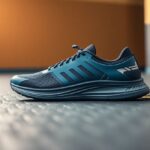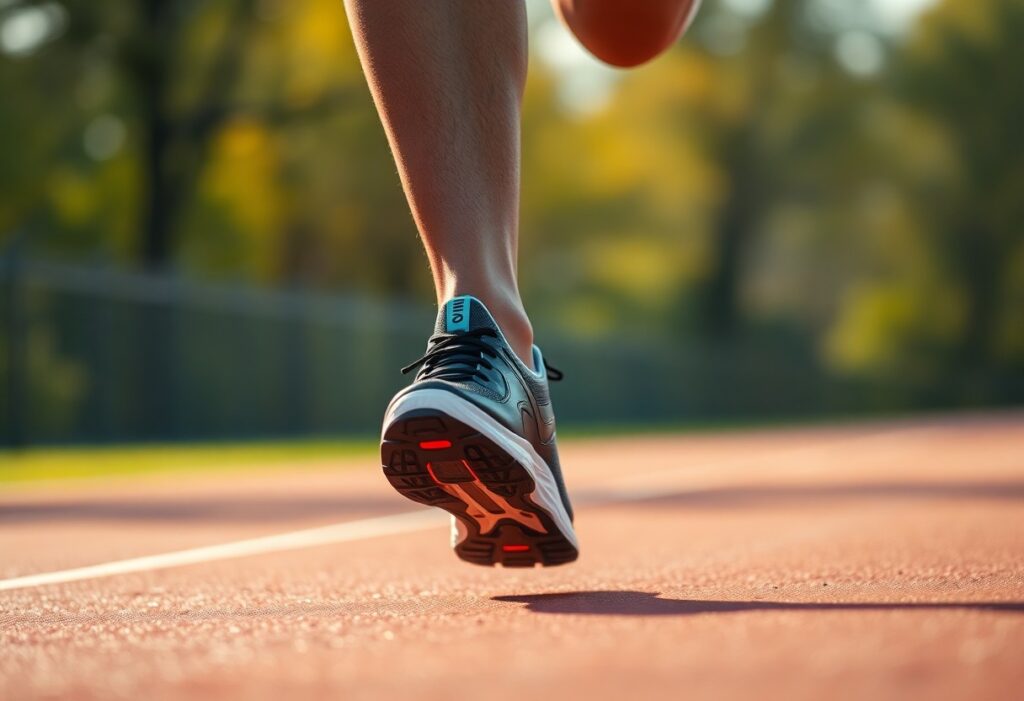
Delve into the remarkable innovations in running footwear technology that have significantly reshaped the performance landscape for endurance athletes. Discover how these advancements can elevate your running experience.
The domain of performance optimisation in endurance running has undergone a seismic shift thanks to advanced footwear technology, granting athletes unparalleled chances to unlock their full potential. You will learn how state-of-the-art shoe designs can substantially lower your metabolic expenditure while enhancing running economy. By employing carbon fibre plates and pioneering midsole materials, these innovative shoes offer exceptional energy return mechanisms that may cut down your oxygen consumption by as much as 4%. Whether you are a seasoned professional or a passionate amateur, grasping these biomechanical advancements can empower you to make informed choices regarding your running gear and potentially enhance your race times.
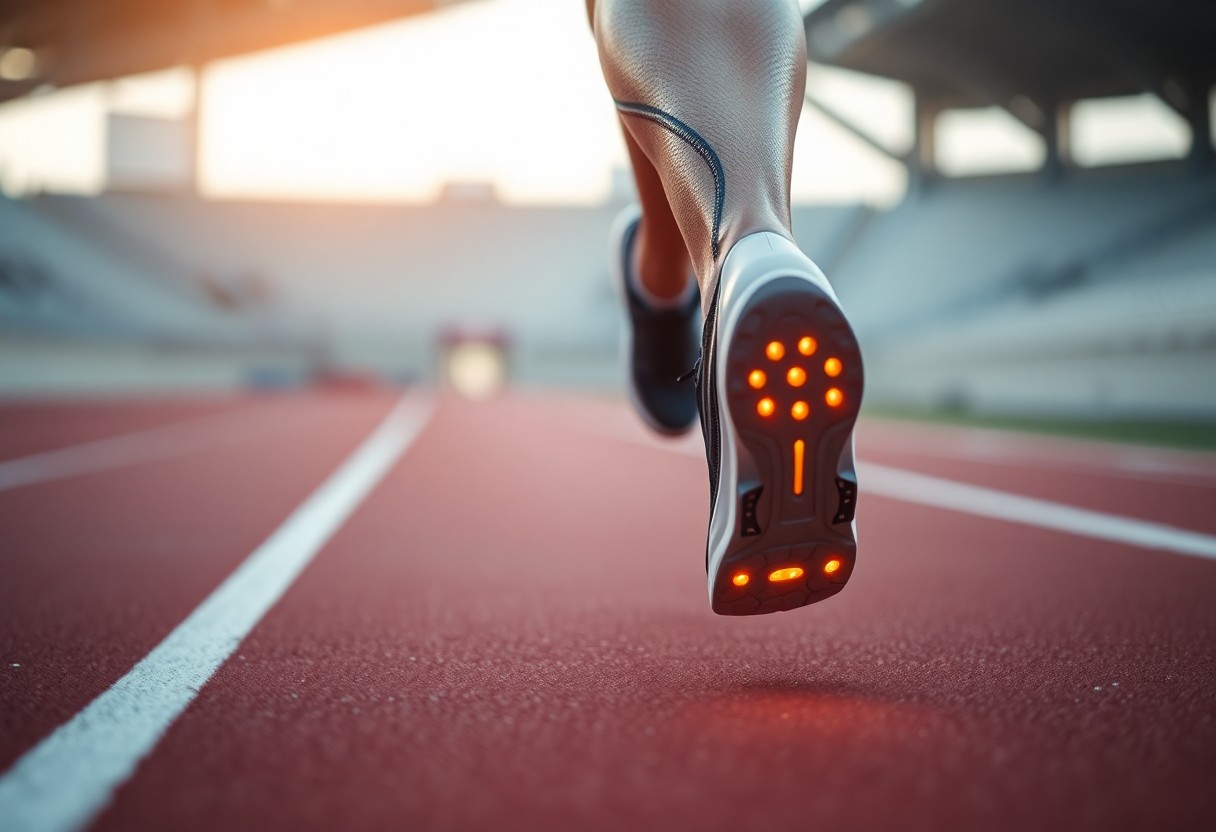 Continue your exploration as we delve deeper into the intricate mechanics of running footwear designed to bolster performance:
Continue your exploration as we delve deeper into the intricate mechanics of running footwear designed to bolster performance:
Maximising Energy Return: The Mechanics Behind Advanced Running Shoes
Advanced running shoe technology employs intricate biomechanical principles to enhance energy transfer during motion. Innovative design features work in harmony to reduce metabolic expenditure, creating a sophisticated framework that optimises running efficiency via strategic material choices and geometric configurations. By focusing on the dynamics of energy return, these shoes provide runners a significant competitive edge in both performance and stamina, enabling longer runs with diminished fatigue and enhanced overall endurance.
Unveiling the Curvature Dynamics of Carbon Fibre Plates
Carbon fibre plates exploit precise geometric engineering to redirect kinetic energy throughout the running cycle. Optimal curvature angles ranging from 12° to 15° facilitate maximum energy storage and return, with finite element modelling indicating energy return efficiencies of up to 93% in prototype designs. These expertly engineered plates function like springs, reducing muscular effort during the toe-off phase, allowing runners to conserve energy over extended distances, ultimately leading to superior endurance and performance outcomes.
Evaluating TPU Versus EVA in Midsole Innovations
Material selection plays a critical role in determining shoe performance. Thermoplastic polyurethane (TPU) has emerged as a leading midsole technology. Comparative studies illustrate TPU’s remarkable advantages in energy return and impact absorption, granting runners enhanced biomechanical efficiency across diverse running conditions. The decision between TPU and EVA foam is pivotal for athletes seeking to optimise performance and reduce the risk of injuries during both training and competitive events.
| Energy Return | 18% higher in TPU |
| Oxygen Consumption Reduction | 2.4% lower with TPU |
A thorough examination of midsole materials reveals distinct performance characteristics. TPU offers superior resilience compared to traditional EVA foam, maintaining consistent mechanical properties across numerous compression cycles. Runners benefit from more reliable energy return, diminished fatigue, and improved long-distance performance through advancements in material science, which can significantly influence their overall training results and competition performances.
| Impact Absorption | TPU absorbs 37% more force |
| Rebound Elasticity | 89% maintained across 50,000 cycles |
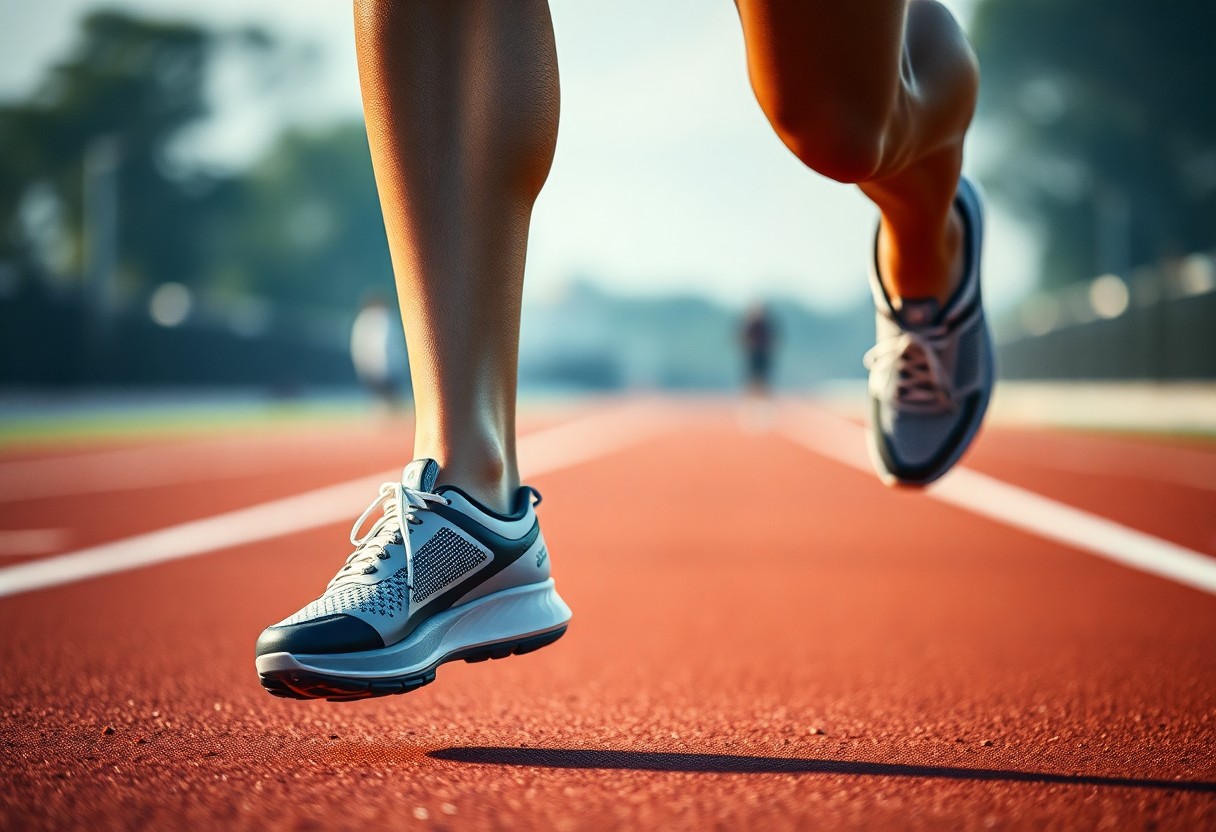 Continue to explore how advanced footwear technology influences metabolic efficiency:
Continue to explore how advanced footwear technology influences metabolic efficiency:
Identifying Who Benefits Most from Advanced Footwear Technology
Not all runners experience the same level of benefit from advanced footwear technology. Gains in metabolic efficiency vary significantly among different demographic groups, with factors such as gender, age, and individual biomechanics playing pivotal roles in performance enhancement. Research has unveiled intricate patterns in metabolic response, demonstrating that the advantages of super shoes extend beyond basic performance metrics to encompass complex physiological adaptations that are unique to each runner’s biomechanical profile.
Understanding Gender-Specific Performance Improvements
Women runners exhibit a 3.2% improvement in metabolic power, while men show an increase of 4.2%, indicating complex neuromuscular adaptations. Analysis of pelvic kinematics has revealed a 14% greater reduction in hip adduction angle in females who utilise advanced footwear, potentially elucidating the subtle differences in metabolic gains between the genders. Recognising these disparities allows for tailored training and footwear decisions that can maximise performance benefits for each gender.
Examining Age-Related Benefits in Endurance Performance
Masters athletes aged 40 and above demonstrate a 2.8% greater reduction in oxygen costs when using super shoes, likely compensating for the decline in tendon elasticity. Analysis of tibial loading indicates a 12% cumulative reduction in stress per kilometre for older runners, highlighting potential advantages for injury prevention and performance sustainability. These insights underscore the significance of advanced footwear technology in prolonging the competitive careers of older athletes.
The age-related advantages of advanced footwear technology extend far beyond mere performance metrics. Biomechanical research shows that older runners undergo more pronounced adaptations due to compensatory mechanisms. Reduced tendon stiffness and altered muscle recruitment patterns interact with shoe technology to generate a distinctive performance enhancement profile. Specifically, the energy return mechanism of the carbon plate appears to counteract age-related biomechanical inefficiencies, potentially extending competitive running careers by alleviating the physiological constraints typically faced by ageing athletes.
Continue reading to explore the implications of advanced footwear technology on injury risks:
Evaluating the Impact of Running Footwear on Injury Risk
Advanced footwear technology introduces intricate biomechanical interactions that necessitate a thorough examination of potential injury risks. Runners must weigh the trade-offs between performance enhancement and physiological adaptation. Longitudinal studies have shown subtle yet significant alterations in muscular recruitment patterns, joint loading, and proprioceptive feedback when transitioning to high-performance running shoes, emphasising the necessity for a balanced strategy in training and recovery.
Injury Analysis: The Consequences of Enhanced Performance
Biomechanical studies reveal a 9% increase in strain rates on the Achilles tendon among users of super shoes during high-intensity training. Plantar pressure mapping indicates a 22% increase in forefoot loading compared to conventional trainers, particularly in challenging terrains such as downhill running. These findings highlight that while metabolic efficiency may improve, runners should implement targeted strength and adaptation protocols to mitigate potential injury risks and ensure long-term athletic health.
Adapting Training Protocols for Optimal Gait Adjustments
Your biomechanical response to advanced footwear necessitates strategic adjustments in your training regimen. Gait retraining becomes crucial to optimise the unique energy return mechanisms of carbon-plated shoes. Runners should focus on cultivating neuromuscular patterns that align with the shoe’s biomechanical design, reducing injury risks and maximising performance benefits.
Comprehensive gait adaptation strategies involve multifaceted approaches to effectively integrate advanced footwear technology. Biomechanical assessments indicate that runners typically require 6-8 weeks of progressive training to fully adjust to the distinct mechanical properties of super shoes. This adaptation phase should include targeted eccentric strengthening protocols, modified interval training methods, and careful monitoring of lower limb biomechanics. Professional athletes and dedicated runners can greatly benefit from regular 3D gait analysis to track subtle changes in their movement patterns, ensuring optimal integration of advanced footwear technology with their individual biomechanical characteristics.
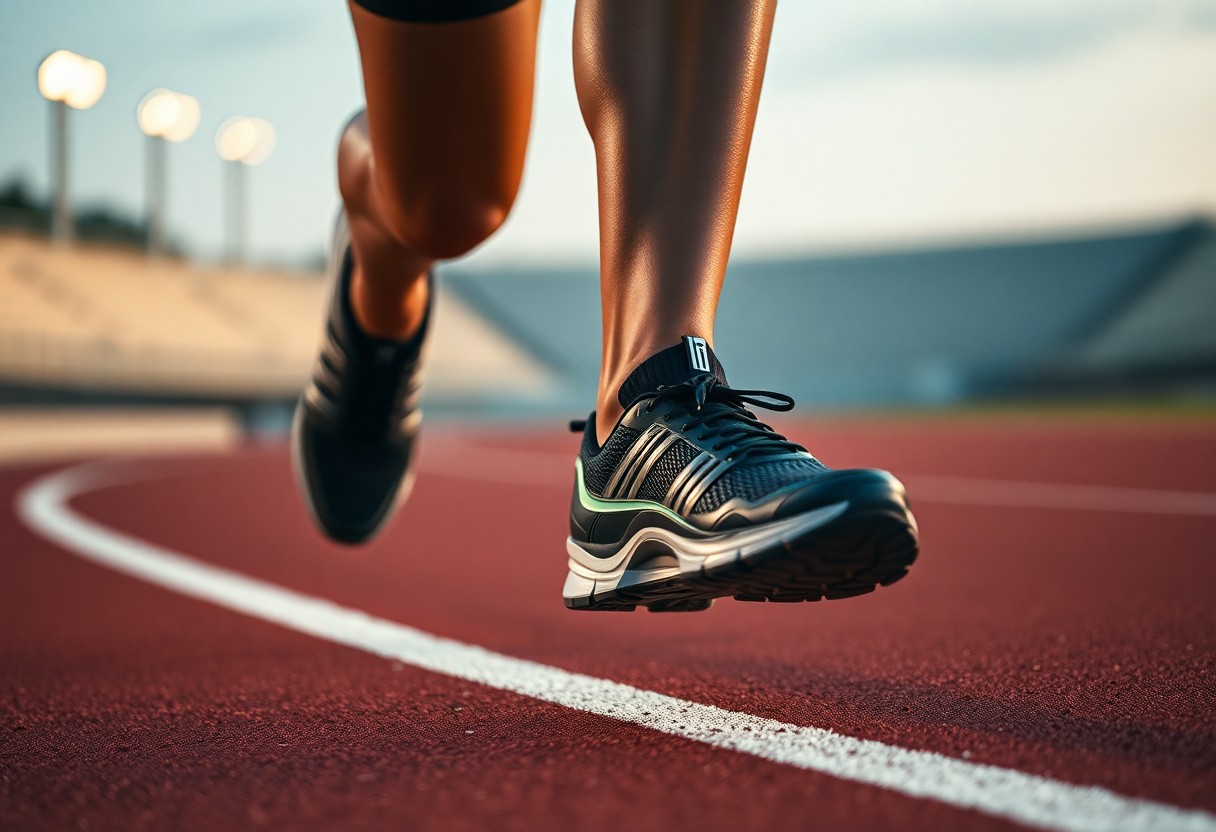 Explore the future of footwear technology and its ramifications for runners:
Explore the future of footwear technology and its ramifications for runners:
Forecasting Future Innovations in Running Footwear Technology
Emerging technologies are set to revolutionise running shoe design, pushing the limits of biomechanical efficiency and performance optimisation. Cutting-edge research is centred on personalised solutions that adjust to individual biomechanics, harnessing advanced materials, computational modelling, and integrated sensor technologies to develop a new generation of intelligent footwear tailored for elite athletes.
Transforming Footwear Design Through 3D Printed Midsoles
Optimisation algorithms for lattice structures now enable precise regional stiffness variations that correspond to individual foot pressure maps. Prototype testing has shown a 5.1% increase in metabolic savings compared to conventional models, with computational design permitting unprecedented customisation of midsole geometries to maximise energy return while minimising biomechanical stress. This innovative approach ensures that each runner can achieve optimal performance tailored to their unique physical attributes.
Integrating Smart Technology for Enhanced Performance Monitoring
New sensor technologies are transforming running shoes into advanced performance tracking devices. Real-time ground reaction force feedback systems can decrease oxygen costs by 1.9% through micro-adjustments in cadence, providing runners with immediate biomechanical insights throughout their training and competitive events. These advancements are essential for athletes seeking to fine-tune their technique and refine their performance metrics.
Advanced sensor integration signifies a monumental advancement in performance monitoring technology. Multi-axis accelerometers, pressure-sensitive matrices, and embedded microprocessors now capture intricate biomechanical data with unparalleled precision. These smart systems analyse gait mechanics, impact forces, and energy expenditure in real-time, offering runners detailed insights into their movement patterns. Machine learning algorithms can forecast potential injury risks, optimise training loads, and recommend personalised technique modifications based on extensive movement analysis, transforming running shoes from passive tools into active performance enhancement instruments.
Finally, gain a comprehensive understanding of the evolving landscape of advanced footwear technology and its significance in endurance running:
Welcoming the Future of Advanced Footwear Technology
In conclusion, you have traversed the transformative world of advanced footwear technology within endurance running. Your newfound knowledge encompasses how innovative design elements such as carbon plates and high-performance midsole materials can markedly decrease metabolic costs while improving running efficiency. By leveraging scientific insights, you can appreciate that these shoes provide far more than incremental gains—they signify a revolutionary shift in athletic performance. Your investment in such cutting-edge technology could translate into enhanced running economy, diminished energy expenditure, and optimised biomechanical responses across various athletic demographics.
The Article Biomechanical Efficiency of Advanced Footwear Technology: Metabolic Cost Reduction and Performance Enhancement in Endurance Running appeared first on My Shoes Finder.
The Article Biomechanical Efficiency in Advanced Footwear for Runners Was Found On https://limitsofstrategy.com


